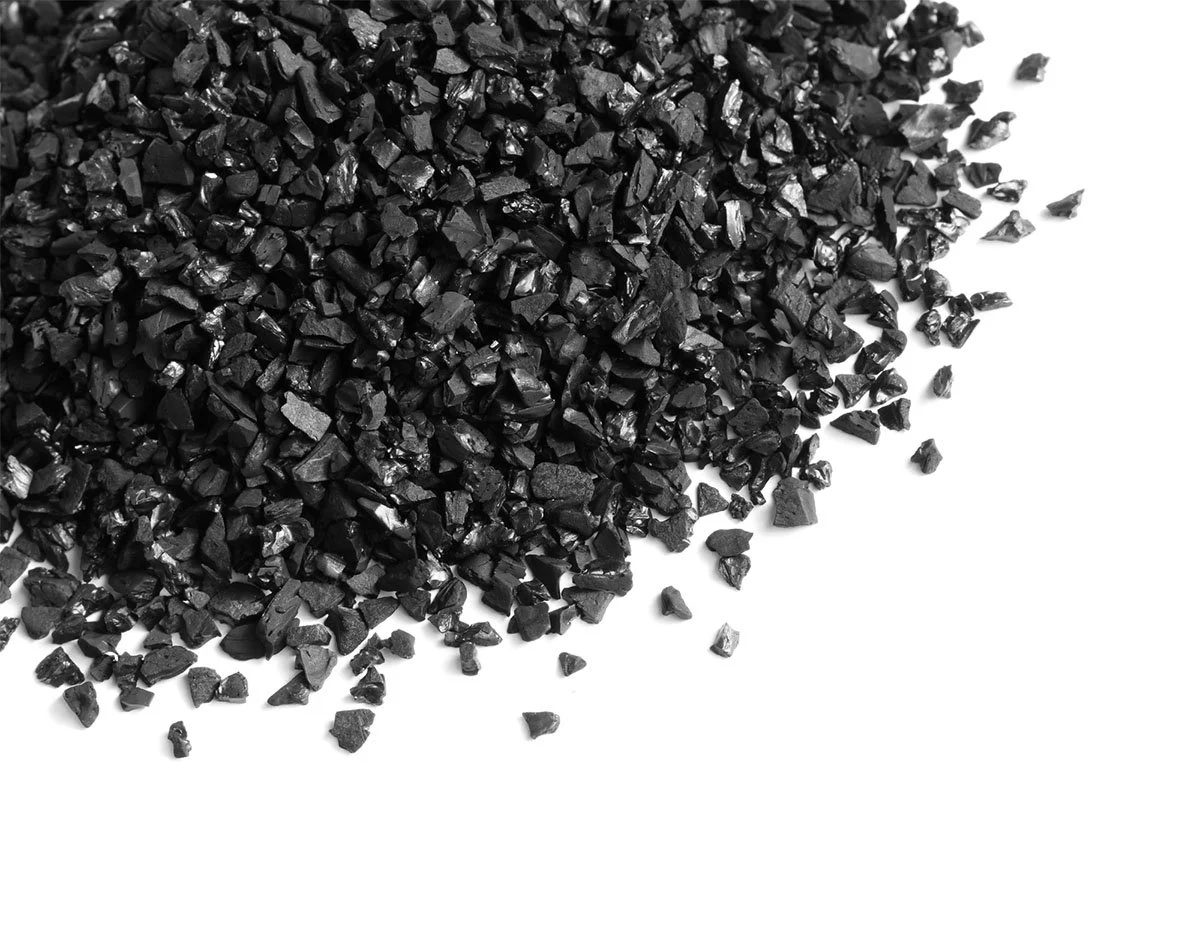Let’s talk about Activated Carbon
What is Activated Carbon?
Activated carbon, a.k.a. activated charcoal, is a material used in liquids and gases to capture impurities and contaminants by having them adhere to its highly porous surface. This is known as adsorption, not to be confused with absorption.
Activated carbon is produced from various carbon-rich materials such as wood, coconut shells, peat, coal, and even certain agricultural byproducts.
The final product is a highly porous form of carbon with a large surface area that can absorb a wide range of contaminants. It is used in water and air purification, chemical processing, mining, pet care, and many other applications.
The process involves:
Carbonization. Where the raw material is heated in the absence of oxygen to remove volatile compounds and moisture, leaving behind a solid, carbon-rich material known as char.
Activation. The char is then exposed to high temperatures (800-1100 degrees Celsius) and in the presence of steam to develop a porous structure that increases its surface area.
Finishing. After activation, the activated carbon is cooled and washed to remove any impurities and then dried and sieved to obtain particles of the desired size.
How to use Activated Carbon
Activated carbon is widely used in water purification, air filtration, and industrial processes to remove contaminants. While activated carbon is a general term, it encompasses various forms, including powdered and granular, each tailored for specific uses.
Drinking
Water
VOC, NOX and Dioxin Control
Wastewater
Treatment
Soil Remediation + Amendment
Mercury
Emissions
Animal Care

What is Powdered Activated Carbon?
Powdered activated carbon (PAC) is a fine granule form of activated carbon. The granules have a large surface area-to-volume ratio, making it extremely effective for quick adsorption of contaminants. Because of this, it is used in liquid-phase applications such as water treatment, food and beverage processing, and pharmaceuticals.
FAQ
-
Granular Activated Carbon (GAC) is a larger particle-sized form of activated carbon compared to powdered activated carbon. It is used in both liquid and gas phase applications due to its durable and robust structure. The larger granule size makes it suitable for continuous flow applications such as water purification systems, air filters and industrial processes. It is easy to handle and can be regenerated for repeated use, making it a cost-effective solution for long-term applications.
-
Powdered, granular, and pelletized activated carbon are produced from the same carbon-rich materials and share the same fundamental adsorption properties that make them effective in capturing impurities in liquids and gases.
-
Only the size and shape. Each product is made from the same base materials and undergoes the same activation processes. The finished product can be produced as a powder, a granule or a pellet.
The application defines the best form of the product to use. Powdered Activated Carbon is typically used for batch processing liquid applications, or vapor phase applications. Granular activated carbon is used for long-term continuous use systems with high flow rates, and pelletized activated carbon is used in challenging environments with significant handling by a final user such as fish tanks and gas masks.
-
Whether you are a Procurement Manager, Environmental Engineer or a Plant Manager, our products are used in a variety of markets to address water, air and gas toxins and emissions needs. To determine what our product offerings are based on a particular market or demographic, visit our Products page.
Maybe as an Operations Manager or Superintendent, you have a specific area of application for which you are looking to find a product; visit our Applications page to quickly search for and discover our products by application.
Still need help? Maybe you're not quite sure what product will serve you best or you'd like to speak with a Sales Manager directly. Our Team is more than eager to get on the phone! We will help you assess the problem you are trying to solve, provide the best solution to resolve it, send samples if requested, and answer all your questions along the way. Call us at (307) 314-3087 or email us at info@atlascarbonllc.com.









